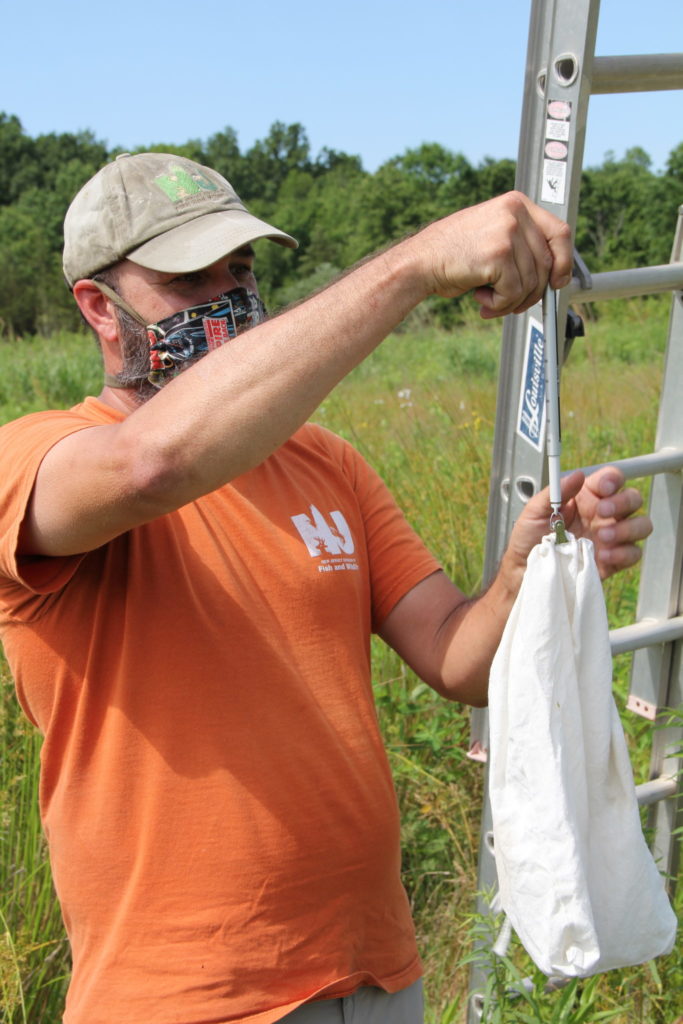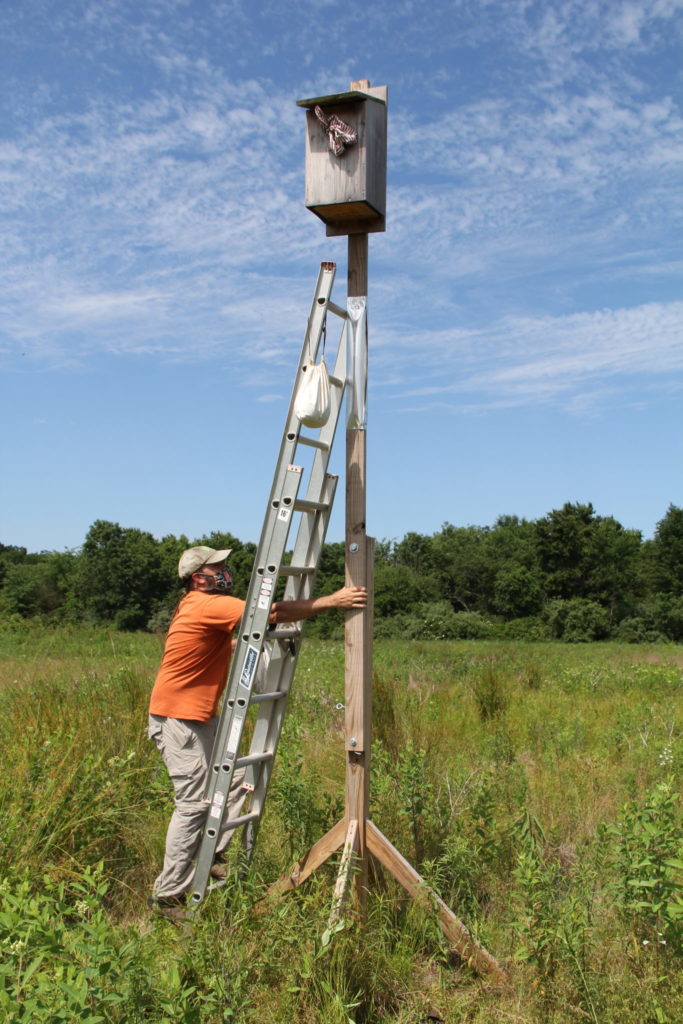Bill Pitts hoists a ladder onto his shoulder and steps into the wild.
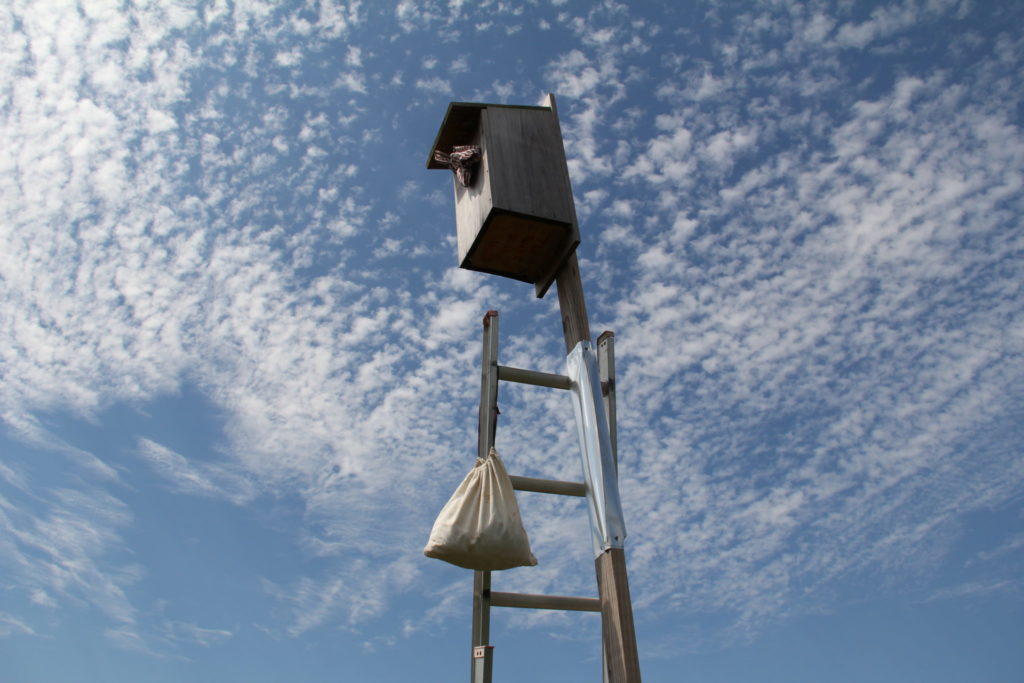 Pitts, a zoologist with the New Jersey Division of Fish & Wildlife Endangered & Nongame Species Program (ENSP), walks through the waist-high meadow filled with grasses, milkweed, and other native plants on the Watershed Reserve and approaches a sky-high kestrel nesting box.
Pitts, a zoologist with the New Jersey Division of Fish & Wildlife Endangered & Nongame Species Program (ENSP), walks through the waist-high meadow filled with grasses, milkweed, and other native plants on the Watershed Reserve and approaches a sky-high kestrel nesting box.
He is part of a team of scientists who are banding American Kestrels to track population recovery in the Hopewell Valley. They record the birth rates, migration patterns, habitat, and behaviors of the kestrels, the smallest of the falcons whose populations are declining in the Northeast because of development and loss of grassland habitat. Kestrels are threatened in New Jersey, and were added to the state’s imperiled list in 2012.
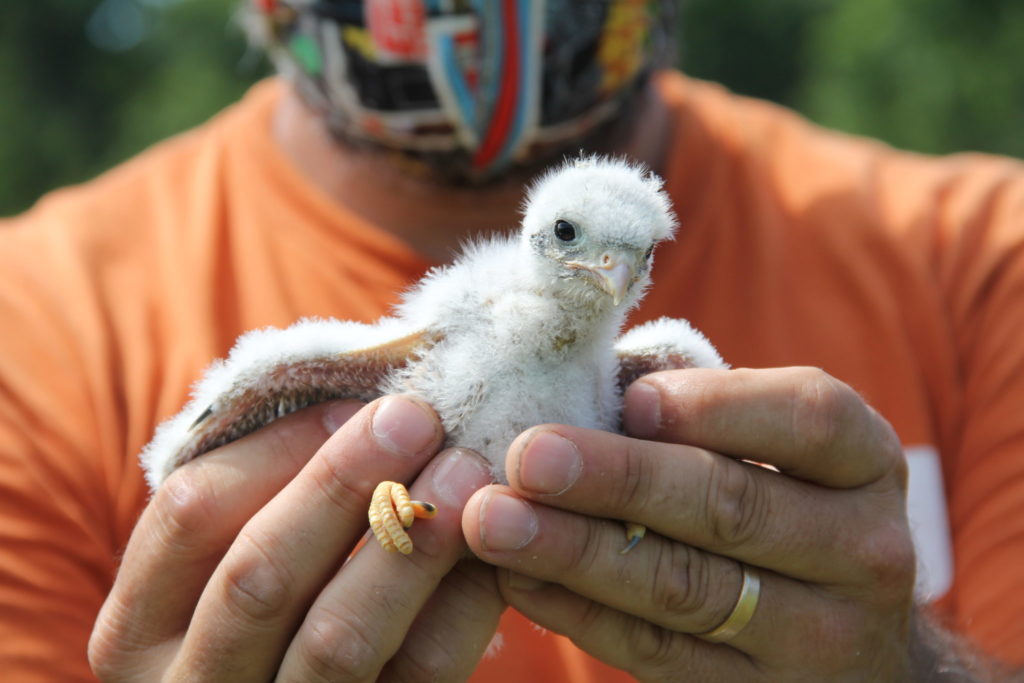 Kestrels are cavity nesters, assuming abandoned woodpecker nests or dead snags in trees. They are easy to spot with their distinctive hunting style of hovering with rapidly beating wings before they swoop downward toward the prey. They typically hunt from trees lining the edge of a field in open countryside or on overhead wires along roadsides, searching for birds, grasshoppers, dragonflies, mammals, snakes, lizards, frogs, and other small animals and insects, Pitts said.
Kestrels are cavity nesters, assuming abandoned woodpecker nests or dead snags in trees. They are easy to spot with their distinctive hunting style of hovering with rapidly beating wings before they swoop downward toward the prey. They typically hunt from trees lining the edge of a field in open countryside or on overhead wires along roadsides, searching for birds, grasshoppers, dragonflies, mammals, snakes, lizards, frogs, and other small animals and insects, Pitts said.
Adult kestrels weigh about 4 ounces – roughly equal to two tennis balls – and are about the size of a mourning dove.
Pitts props his ladder against the nesting box and climbs up, stuffing the entrance with a cloth. Next, he carefully lifts the side panel to remove each of the fuzzy chicks from the nest and places them in separate white cloth bags. This is his first year banding the kestrels at the Watershed and he’s pleased by the four, healthy chicks that appear to be about 13 days old.
“We like to band them at about 16-to 22-days-old when it is easier to tell the sex of them,” Pitts said. “The older they are, the more likely they are to survive and to fledge.”
The kestrels are banded with a USGS bird band. If they are captured later, the scientists will understand how they move around in the region or even farther afield. He turns over a chick and quickly adds a band with a distinctive number that is entered into a database, which details when and where the bird was banded.
Back down in the ladder and standing in the meadow, he weighs and examines the wings on the chicks, determining that there are three males and one female. Adult females do about ¾ of the incubation of the eggs in the nest. Typically, there are 4-6 eggs, and the fledglings take first flight after about 28-31 days. The adults will spend the next few weeks teaching the fledglings to hunt before the youngsters go off on their own.
Most kestrels live three-to-six years although the oldest banded kestrel lived more than 11 years. The population here is partially migratory, so many adults and young will migrate from New Jersey to Florida. Birds from the northern regions will migrate farther south to the Caribbean and northern South America.
“The more competitive adults are probably the ones that get the best early wintering habitat. They set up shop … and the young end up doing a lot a migrating, that is another thing that is tough for them.”
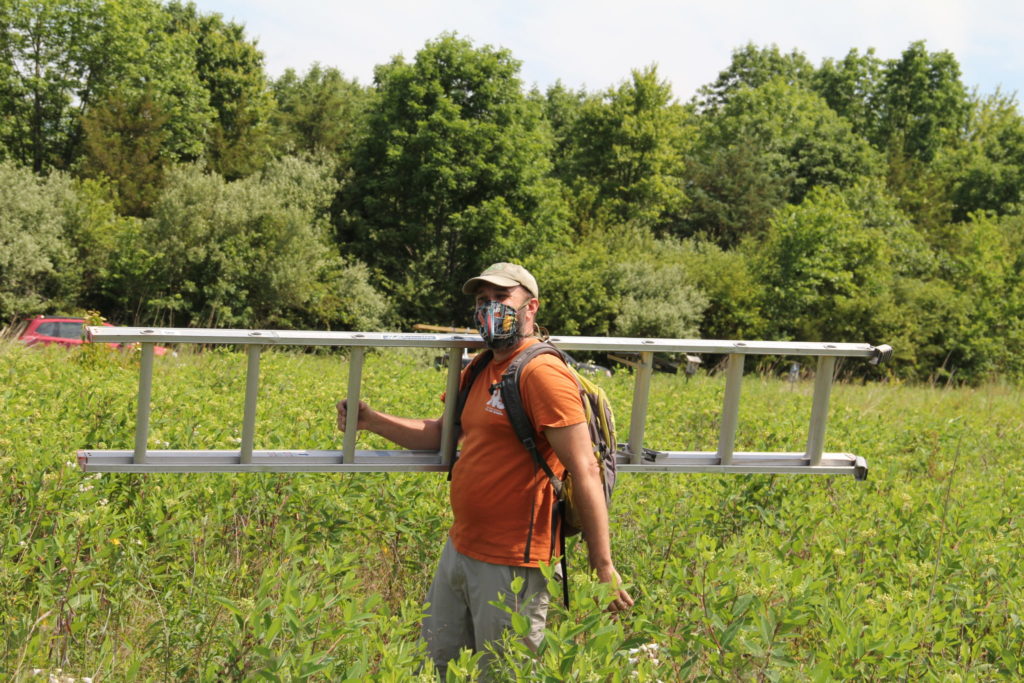 The nesting box is one of 50 installed in the county by Friends of Hopewell Valley Open Space (FoHVOS) as a Community Conservation project. They were funded by a grant from The Conserve Wildlife Matching Grant Program. This program is administered by ENSP with funding from the Conserve Wildlife License Plate renewal fund. (Learn more about the Conserve Wild matching grants).
The nesting box is one of 50 installed in the county by Friends of Hopewell Valley Open Space (FoHVOS) as a Community Conservation project. They were funded by a grant from The Conserve Wildlife Matching Grant Program. This program is administered by ENSP with funding from the Conserve Wildlife License Plate renewal fund. (Learn more about the Conserve Wild matching grants).
Pitts points out how the nesting box has flashing on the 10-foot pole to discourage raccoons and other predators from the ground from climbing up and devouring the eggs or chicks. This year, there were eggs laid in 10 boxes, and all have been successful to date, he said.
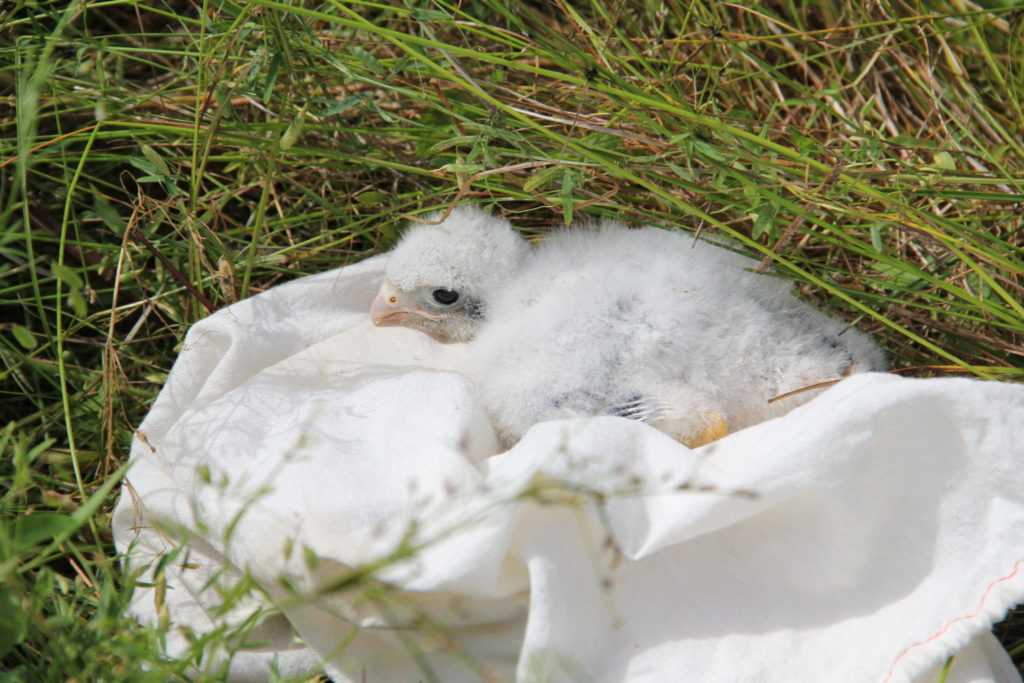 Once the measurements and observations are made on the chicks, Pitts returns to his truck and ventures off to the next nesting box area. Starting in early April, these kestrels are monitored by FoHVOS interns and volunteers on the Watershed and elsewhere in Hopewell Valley. People check every two weeks on the eggs and, once the clutch is laid, monitor the activity and growth of the chicks to track their recovery.
Once the measurements and observations are made on the chicks, Pitts returns to his truck and ventures off to the next nesting box area. Starting in early April, these kestrels are monitored by FoHVOS interns and volunteers on the Watershed and elsewhere in Hopewell Valley. People check every two weeks on the eggs and, once the clutch is laid, monitor the activity and growth of the chicks to track their recovery.
“It’s a pretty quick turnaround from these guys going from fluff balls to falcons,” Pitts said.
